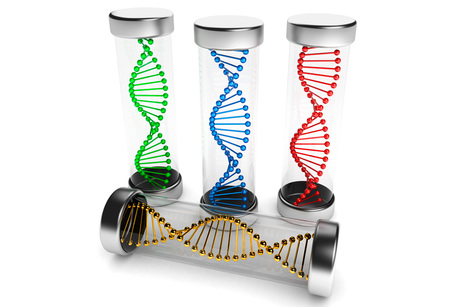Programmable vaccines made from RNA

Engineers from Massachusetts Institute of Technology (MIT) have developed an easily customisable vaccine that can be manufactured in one week. Writing in the journal Proceedings of the National Academy of Sciences, the team said they developed the platform because existing methods are “limited in their ability to respond rapidly to evolving and emerging pathogens, or sudden outbreaks”.
Vaccines consisting of an inactivated form of a virus or other pathogen usually take a long time to manufacture, and for some diseases they are too risky. Other vaccines, consisting of proteins normally produced by the microbe, don’t always induce a strong immune response, requiring researchers to seek an adjuvant (a chemical that enhances the response).
“To respond better to evolving pathogens, sudden outbreaks and individual patient needs, a flexible, safe and efficient vaccine platform amenable to rapid production near the point of care is required,” the study authors said. “To this end, we created a fully synthetic, single-dose, adjuvant-free nanoparticle vaccine platform wherein modified dendrimer molecules nanoencapsulate antigen-expressing replicon mRNAs.”
The idea of using messenger RNA (mRNA) molecules as vaccines has been around for about 30 years, but one of the major obstacles has been finding a safe and effective way to deliver them. MIT postdoc Omar Khan, a first author on the paper, decided to package RNA vaccines into a nanoparticle made from a branched molecule known as a dendrimer. One key advantage of this material is that the researchers can give it a temporary positive charge, allowing it to form close associations with the negatively charged RNA.
By inducing the dendrimer-RNA structure to fold over itself many times, Khan generated spherical vaccine particles with a diameter of about 150 nm. That made them of similar size as many viruses, enabling the particles to enter cells by exploiting the same surface proteins that viruses use for this purpose.
mRNA can be designed to code for any viral, bacterial or parasitic protein. This means the researchers can design vaccines that produce nearly any protein they want. RNA vaccines induce host cells to produce many copies of the proteins they encode, which provokes a stronger immune reaction than if the proteins were given on their own. The RNA molecules also include instructions for amplification of the RNA, so that the cell will produce even more of the protein.
In tests in mice, animals that received a single dose of one of the vaccines showed no symptoms following exposure to deadly pathogens including Ebola, H1N1 influenza and Toxoplasma gondii. “No matter what antigen we picked, we were able to drive the full antibody and T cell responses,” said Khan.
The vaccine is designed to be delivered by intramuscular injection, making it easy to administer. The researchers believe it is safer than DNA vaccines, another alternative that scientists are pursuing, because unlike DNA, RNA cannot be integrated into the host genome and cause mutations.
Associate Professor Daniel Anderson, the senior author of the paper, noted that the nanoformulation approach “allows us to make vaccines against new diseases in only seven days, allowing the potential to deal with sudden outbreaks or make rapid modifications and improvements”. The ability to rapidly manufacture these vaccines could be especially beneficial for fighting influenza, as the most common flu vaccine manufacturing method takes months. This means that when an unexpected flu strain appears, such as the 2009 pandemic-causing H1N1 virus, there is no way to rapidly produce a vaccine against it.
Khan and his co-first author, Jasdave Chahal, plan to start a company to license and commercialise the technology. In addition to the vaccines they have already designed, they hope to create vaccines for Zika virus and Lyme disease. They also plan on using the approach to create cancer vaccines that would teach the immune system to recognise and destroy tumours.
Blood test for chronic fatigue syndrome developed
The test addresses the need for a quick and reliable diagnostic for a complex,...
Droplet microfluidics for single-cell analysis
Discover how droplet microfluidics is revolutionising single-cell analysis and selection in...
PCR alternative offers diagnostic testing in a handheld device
Researchers have developed a diagnostic platform that uses similar techniques to PCR, but within...





